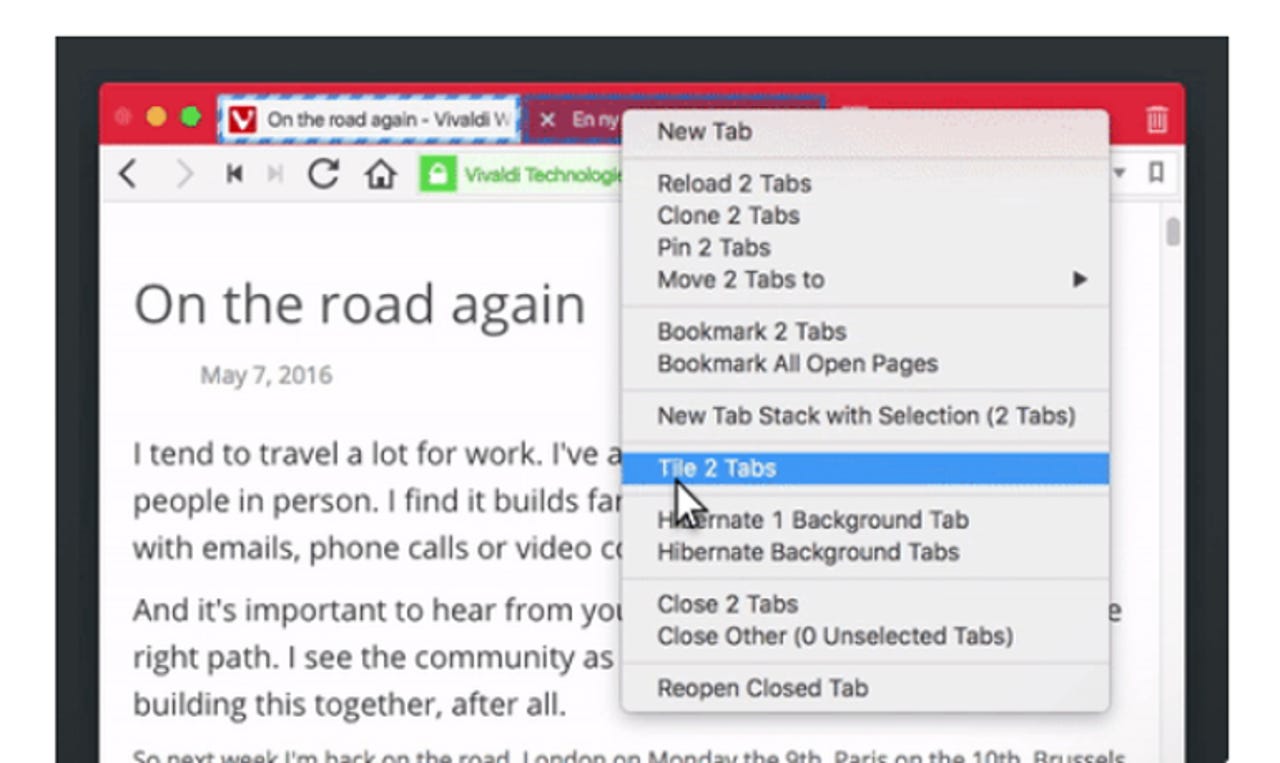Vivaldi 1.2 'Google-free' Chrome browser is out - with custom mouse gestures, smarter tabs


Users can now also set any webpage as the starting point for a new tab from the Tabs Page setting.
Vivaldi, the Chrome-based but Google-free browser "for power users", has a new feature that lets you create your own custom gesture commands.
The feature arrives in version 1.2 of the young browser from Vivaldi Technologies, the Norwegian software firm headed up by Opera co-founder Jon von Tetzchner. Vivaldi updates its browser every six weeks, this being its third update since launching in April.
Read this
As von Tetzchner explained to ZDNet recently, Vivaldi wants to go against the trend of simpler browsers and instead plans to offer more tools and customization options for people who spend a lot of time on the web.
Setting up gestures can be done from mouse settings for tasks such as closing a tab or reopening closed tabs. Once an action is selected, gestures consisting of horizontal or vertical lines and up to five strokes can be saved to the browser. The custom gestures functionality builds on Vivaldi's existing group of preset mouse gestures.
Users can now also set any webpage as the starting point for a new tab from the Tabs Page setting, as well as close multiple selected tabs with a keyboard shortcut. For example, this shortcut can be done on a trackpad Mac by holding down a tab while pressing Command. The shortcut for closing tabs is Command W.
This version also has a new accessibility feature for the vision-impaired, allowing users to set a custom zoom level of between 20 percent to 500 percent for each tab.
Other feature updates include new keyboard shortcuts, keyboard shortcuts in the address bar, as well as a new Add Bookmark button animation, and updated tree icons and default document favicon.
Finally, Vivaldi now supports 52 languages with the latest addition of Catalan.
Von Tetzchner recently told ZDNet's sister site CNET that the company is also planning to release an integrated email client, effectively bringing back to life the feature that Opera dropped a few years back.
"We're on a mission to make the most customizable web browser, because a browser that adapts to you will be the best browser for you," von Tetzchner said in a statement.
"Giving options isn't about adding on unnecessary things, it's about giving choice and control back to the user. That's why you can make your own mouse gestures, edit shortcuts, and generally build your own browser to work just the way you like it."